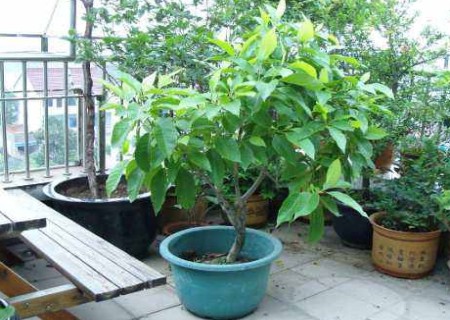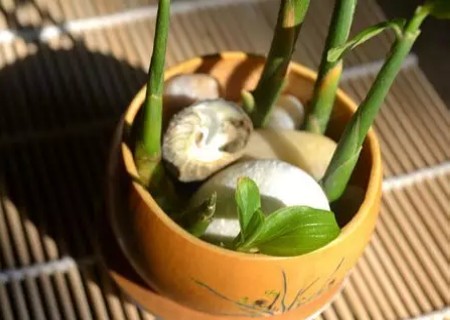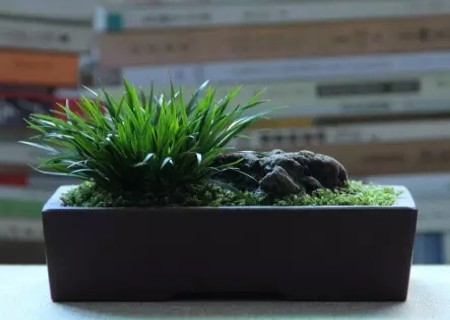The method of making bonsai of white orchid
White orchid, also known as yellow orchid, usually we see a tree shape as high as, but this kind of tree also has short varieties, and can also bloom and color as white as snow, if the temperature is suitable, it will remain in bloom for a long time, fragrant and beautiful. White orchid bonsai beautiful trees, green leaves, snow-white flowers, fragrance like orchids, made into stump bonsai in the north for appreciation.

The white orchid is very lovable as an ornamental flower and generous as a bonsai. So, how to make white orchid bonsai? Today, the editor will introduce to you the method of making bonsai of white orchids.
First, obtain the source of seedlings
White orchids can propagate young plants by sowing, cutting, striping and other methods. Here we sow for you, first of all, prepare the fertile, loose and well-drained soil, and the slightly acidic sandy soil is the most suitable. Then soak and sprout the white orchid seeds directly on the culture soil, and finally cover the seeds evenly with a layer of river sand, and then water them once.
2. Seedling transplanting
When the grafted seedlings grow to about 8-10 cm and have more than two true leaves, they can be transplanted into a nutrition basin for normal cultivation. Nutritious soil is mixed with wood chaff, soil and organic fertilizer. When transplanting, first gently pull out the grafted seedling, then soak it in the plant gene activator for about half a day, then plant the young plant into the nutrition basin, pour the fixed root water for the last time, and then place it in a place that can receive astigmatism for maintenance.
3. Seedling cultivation
After transplanting seedlings for 2-3 months, we can gradually increase nutrients by means of fertilization, but liquid fertilizer is generally applied once a week. On the other hand, the truncated watering of seedling cultivation is generally considered according to the weather conditions, and should be watered 2-3 times a day when the weather is dry and hot. If the weather is cool and the humidity is suitable, water can be watered once a day.
4. Grafted young plants
When the young plants are transplanted for half a year, they can be grafted, mostly in the summer of the second year after transplanting. At this time, the young plants have basically grown to a height of more than 30 centimeters, which is very suitable for grafting. Both cutting and bud grafting can be used, which is basically the same as the grafting method of other kinds of seedlings. However, grafting can use robust Magnolia seedlings as rootstocks, so that the grafted seedlings heal faster and are more conducive to survival.
Fifth, pruning modeling
When the young plant grows for 2 years, we can make bonsai for its timely pruning. When trees begin to germinate in spring, with the continuous growth of new shoots and branches, we can timely carry out flat binding treatment according to their growth status, and tie them into a curved state to artificially control the growth height of the trunk. At the same time, let the branches grow according to our expectations, so that it is more in line with the characteristics of bonsai trees. Of course, in the modeling process, we also need to combine pruning means to cut off the branches that are not conducive to modeling and improve the appreciation of bonsai. (written by: laughing Book 2017-08-17 22:33)
Time: 2019-05-25 Click:
- Prev

The method of hydroponic culture of ginger bonsai
Many potted friends like to plant some vegetables at home, especially by hydroponics. Ginger is also a kind of vegetable that can be used for hydroponics. Not only that, it can also be made into a pot of ginger. You don't believe me? Then try it! Below
- Next

The method of matching stone for calamus bonsai
Acorus calamus in the wild is usually accompanied by stones, which looks very interesting. Therefore, as a bonsai of calamus, it is more enjoyable and interesting than the potted plant of calamus alone. Acorus calamus itself has fine leaves, green hair and emerald green, while the matching stone has rugged rocks, ravines and ancient charm.
Related
- Fuxing push coffee new agricultural production and marketing class: lack of small-scale processing plants
- Jujube rice field leisure farm deep ploughing Yilan for five years to create a space for organic food and play
- Nongyu Farm-A trial of organic papaya for brave women with advanced technology
- Four points for attention in the prevention and control of diseases and insect pests of edible fungi
- How to add nutrient solution to Edible Fungi
- Is there any good way to control edible fungus mites?
- Open Inoculation Technology of Edible Fungi
- Is there any clever way to use fertilizer for edible fungus in winter?
- What agents are used to kill the pathogens of edible fungi in the mushroom shed?
- Rapid drying of Edible Fungi

